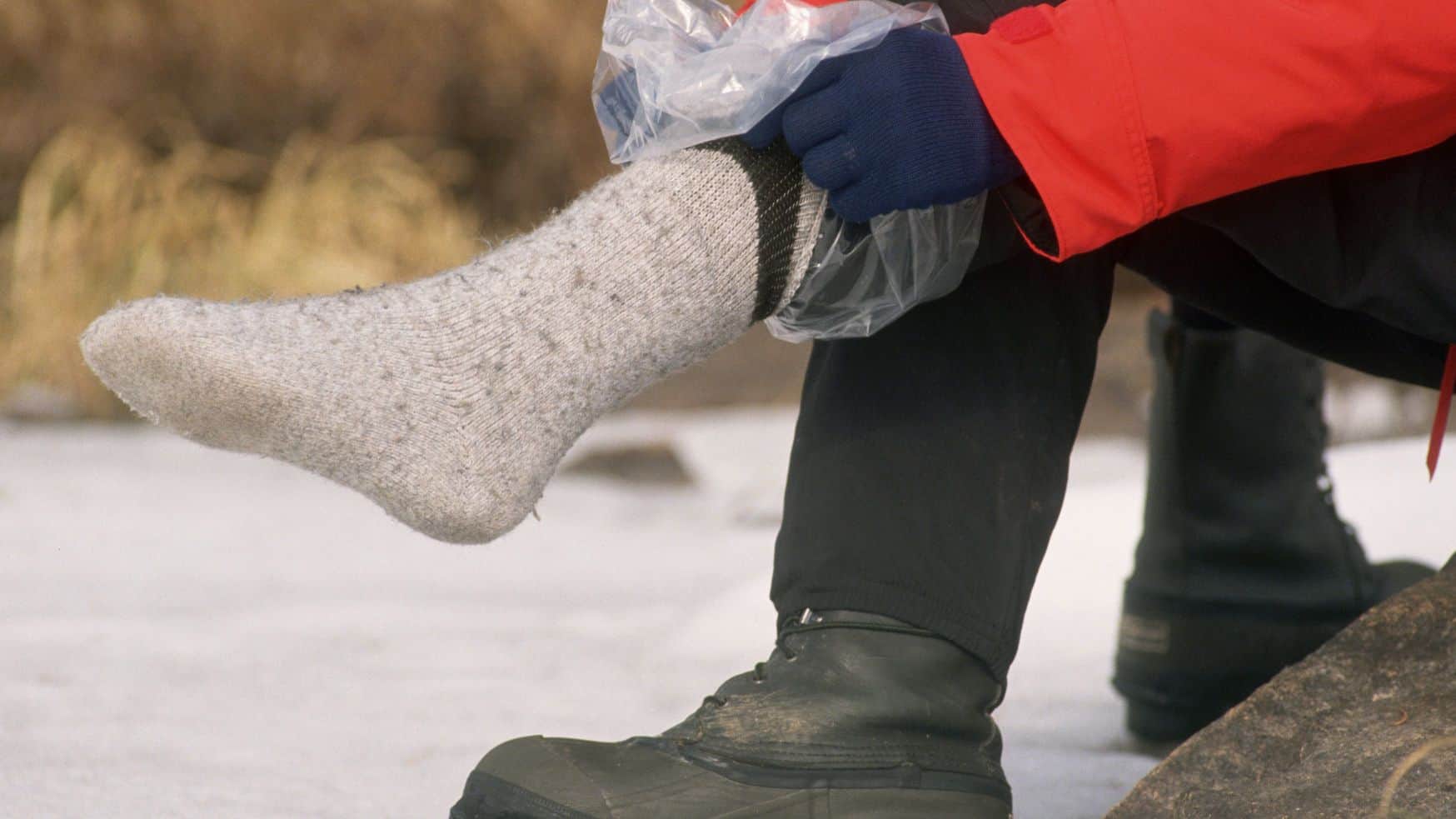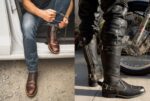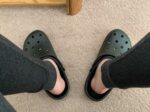
Winter reminds me of a hot cup of coffee, with a cozy couch to lie down just beside the fireplace and a blanket to cuddle on. Such a perfect ambiance, what say?
Every year this season provokes me to add a few new items to my wardrobe collection, be it clothes, shoes or caps.
This year I opted for a long fur coat, a smart woolen cap and a pair of steel toe boots.
Wow! Going shopping excites me a lot.
Everything seemed great until one of my friends suggested not to wear those steel toe boots in winter. It won’t be a wise decision according to her.
Initially, I felt a bit disappointed but after researching on steel toe boots, I came to the conclusion that:-
Steel toe is absolutely okay for chilled winter. Steel toe boots will never be a problem if worn with proper socks with extra insulated layers, in the winter season. One can also avail other working boots like the composite boots that can prevent toes from getting cold, but at a slower pace.
This article of mine will gradually provide you, readers, out there, whether the usage of steel toe boots in winter is wise enough or not.
So, start scrolling down!
While shopping for comfortable pair of boots for winter, it is generally advisable for specific markings such as CI (Cold Insulation) and thermal insulated linings in the product description.
Effects of Winter on your Feet with Steel toe boots on
Your foot is a significant part of your body, comprising lesser muscles rather than other parts of the body. Walking on snow for long hours can get your feet wet and frozen in winter.
→ Footwear thermal insulation is the most important factor of protection from cold. Thermal insulation within the toes is comparably less for which it requires constant movement and blood circulation to keep warm.
→ Our feet and toes get very easily affected by cold and pain sensations when they come in contact with cold weather conditions. It is quite possible that steel toe boots can make your feet get cold very fast, due to the presence of the steel cup around the toe area.
→ Sometimes low temperature results in the poor blood circulation of your feet, making them numb.
→ Extreme exposure of your feet, to cold, can result in Pernio, cracked heels, blisters and foot pain.
→ Leather boots, Rubber boots, Insulated leather with steel toe caps are few options for winter. Materials like rubber and leather act as a good insulator to protect your feet, but only to a certain extent. On the other hand, steel is a conductor of heat and cold will make your toes colder, faster.
Now, let’s have a quick look at the plus and minus points of wearing steel toe boots in winter!
Pros of Steel toe boots in Cold weather
Steel toe boots are a good choice for winter. Let’s take a look at why?
√ Due to its lightweight one can walk on snow with these boots, maintaining proper speed.
√ Steel toe boots, being sturdy, protective footwear, can sometimes save your feet from getting numb in low temperature, but for a very short period.
√ The presence of snow in winter creates a slippery environment. Here, steel toe boots can prevent you from falling down.
√ One need not worry if your foot is covered with snow with your steel toe boots on, because of its strength and durability.
√ Workers working on the field always require an extra layer of warmth and protection in winter. This footwear will serve its purpose well.
√ Steel toe boots save your feet from cold and snow, providing traction on wet surfaces also.
√ The performance of these boots on the basis of impact and load resistance needs immense appreciation.
√ These boots are waterproof.
√ Many feel that these boots afford more protection than any other footwear.
√ For better results, it’s advisable to wear warm socks along with this footwear when you are walking or working in the snow.
Cons of Steel toe boots in Cold weather
Since there is always the other side of a coin, steel toe boots also have some negative effects.
A look at the below disadvantages will help the workers to overcome them.
⊗ We already know that steel is a good conductor of both heat and cold. Your feet can easily get cold because of the encasement of a steel cup around the toe area of these boots.
⊗ These boots get colder very fast affecting your regular blood circulation.
⊗ Due to the presence of steel in these boots, your feet can undergo frostbite, pain, swellings and sometimes blisters.
Advantages and disadvantages go hand in hand, despite it is up-to the users to choose, whether they can go for steel toe boots in winter or not.
Worried for the lack of information about other safety work boots available rather than the steel toe ones?
No need to feel disappointed.
If you are confused regarding, whether to wear steel toe boots in winter is wise enough or not, I have a few alternative options for you.
Composite Toe Boots-
According to OSHA (Occupational Safety Health Administration), workers should wear protective footwear during their fieldwork. Though steel toe boots are a traditional choice, we can also composite boots with plastic toe caps, carbon fibre or strong synthetic materials.
In ASTM (American Society for Testing and Materials)-compliant safety-toe footwear, the toe-cap offers a sufficient level of protection, when it is made up of steel or other composite materials.
These alternative boots can also withstand impact and compression along with severe weather conditions. Composite boots are also light weighted which maintains one’s comfort level. These boots are durable and sturdy.
The plastic in composite boots is a good thermal insulator, transferring the heat less readily. With proper insulation and being waterproof, these composite boots are a good option.
Aluminum Toe Boots-
Aluminum toe boots are light weighted but a bit thicker and heavier than steel toe boots. It sometimes provides better insulation than a single layer of steel in case of steel toe boots.
Metatarsal Guard Boots-

These boots provide guarding material along the metatarsal region protecting the regional small and soft bones. The metatarsal acts as an extra protective element for the toes and the upper region of feet.
Boots With Outsoles-
Boots indicated with ‘CI’ (Cold Insulation) is a marking for outsoles providing cold insulation from the ground, making these boots resistant to inimical environments.
Boots With Insulated Linings-
Linings such as Primaloft, Thinsulate, Gore-Tex and Thermolite have several layers made of insulating felt. Check for one of these linings in the product description while choosing your work boots.
Useful Tips To Keep Your Feet Warm In Steel Toe Boots During Winter
Your feet being an important part of your body, provides stability all over. Low temperatures in the winter season can cause few foot problems and increase your level of discomfort. I would like to suggest some preventive measures to keep your feet warm, this winter.
→ Better to wear less-breathable shoes with more leather and less mesh, to block the airflow.
→ A paper towel or napkin on the top of your feet, toes and under the toes, will provide enough insulation and warmth.
→ Choose warm, fuzzy socks because they can easily trap the heat from the body in the feet, keeping it warm.

→ A plastic wrap or a plastic sandwich bag inside your footwear protects your feet and toes from cold air.
→ Disposable Shower Caps are worthy enough to keep rain and snow out of your footwear.
→ A duct tape, sticked to the upper part of your shoes can also prevent your feet from snow and wet weather.
→ A double-layered pair of socks sweat-wicking polypropylene thin part inside and woolen part outside, help to keep your feet warm.
→ Waterproof footwear with Gore-tex lines is also a good choice for the rainy and winter season.
→ You can also insert single-use toe warmers inside your footwear.
→ Always try to walk faster on snow to keep your blood circulation fast as it will warm your feet.
FAQ:
Few informative queries are added down, keeping the reader’s choice in view.
Is it safe enough to wear work boots in the snow?
Snow and ice can cause damage to the material of your regular working boots, shortening its lifespan. This happens due to the presence of salt which eats away the material, leaving behind ugly stains on it.
To keep yourself warm and dry, just go for winter work boots which can easily withstand harsh cold.
Who and when can one wear steel toe boots?
Factory workers, Laborer, Construction Site Workers, Farmers, Electricians etc. need these boots during fieldwork.
People working in the construction and manufacturing areas should always choose steel toe boots because they are capable enough of protecting one’s feet from crushing, lacerations, punctures, slipping, falling down, burns, and many more hazards.
Are these boots mandatory?
Of course yes, when you are working in a job site, where you can easily have a foot injury due to falling, rolling or piercing objects. Not all job profiles come with a safe and favorable environment, but safety should always be the priority.
Why are some steel toe boots uncomfortable?
This is just because of the regular insoles integrated into the boots. To avoid this discomfort, you can buy premium insoles and install them at your convenience. Customizing your footwear with after-market insoles can also help you out.
Can steel toe boots cut your toes off?
This query initially creates a sense of danger for users, but it is quite possible. If something heavy falls on your boots, the steel inside can curl and cut your toes.
Are steel toe boots essential for electricians?
According to OSHA electricians can wear steel to boots unless the conductive portion is not in contact with the feet. Moreover, electricians should also check that the steel in the shoe is not exposed on its outside part.
Non-metallic safety boots are a good option for electricians on duty because these boots are non-conductive and can protect the feet.
Can steel toe boots cause foot problems?
Proper fitting of your boot is a must. If by any chance, your boots are too tight, you can suffer from blisters, calluses, corns and neuromas.
Sometimes this footwear leads to leg soreness. After a long work shift, it is better to put your shoes off and practice some proper exercise to avoid soreness.
In any case, you go for loose boots, you will experience chafing due to the constant rubbing of your feet to the hard part of your footwear.
Is it possible to remove the steel in steel toe boots?
YES, have a good grip of the bottom of the steel toes, tightly with the help of the pliers. Now pull the steel toes out of your boots by twisting the handle of the pliers, back and forth. They come off out of your boots.
Disclosure:
Work never stops for winter season. Despite the cold waves, low temperature and snowfall, the workers are bound to be active in their own work field.
This article of mine will surely help them to take precautions and keep their feet warm and dry in winter.
Selection solely depends on the user’s choice.
Hope to come up soon with something new and informative.
Till then, stay tuned.
Take good care of yourself and your loved ones.
Happy Winters!







